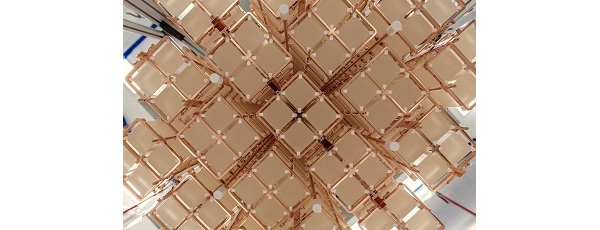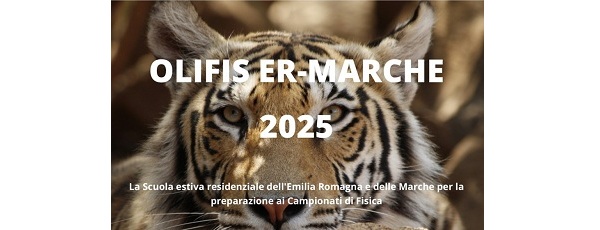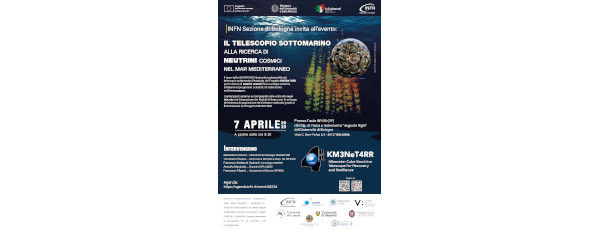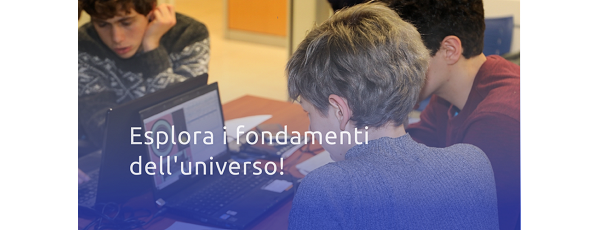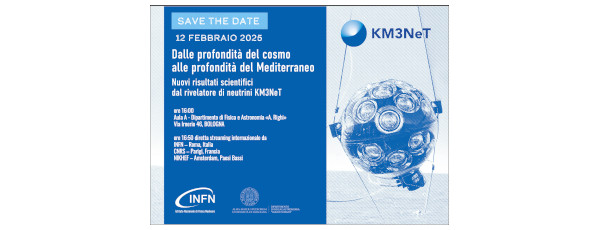New results from the CUORE (Cryogenic Underground Observatory for Rare Events) experiment, hosted at the Gran Sasso National Laboratories (LNGS) of the National Institute for Nuclear Physics (INFN), have been published in Science (https://www.science.org/doi/10.1126/science.adp6474).
CUORE’s primary goal is to search for neutrinoless double beta decay (0𝜈𝛽𝛽) in 130Te. The experiment began operation in 2017 and has continuously collected data since 2019 with a duty cycle of more than 90%. Thanks to the unprecedented operational stability of the cryogenic infrastructure, an exposure of over 2 tons/year of tellurium oxide (130TeO2) was accumulated between 2017 and mid-2023.
With the largest dataset of its kind, the CUORE collaboration has set a new limit on the frequency with which neutrinoless double beta decay could occur in a tellurium atom. On average, 3.5 x 1025 years, or no more than once every 35 million billion billion years, the most stringent limit ever reached for the 0𝜈𝛽𝛽 half-life of tellurium.
The CUORE detector consists of a compact array of 988 130TeO2 crystal calorimeters, each 5 × 5 × 5 cm³ in size, with an active mass of 742 kg of 130TeO2, equivalent to approximately 206 kg of 130Te. The detector is housed inside a dilution cryostat specially designed for this experiment. This is a multistage dilution refrigerator, without cryogenic fluids, which cools the detector to approximately 10 mK and keeps it stable at this temperature. The overall volume of the detector is approximately one cubic meter, which is why the CUORE detector has been called “the coldest cubic meter in the universe.”
The use of these sophisticated cryogenic detectors allows CUORE to achieve such sensitivity that it can even record the pulsating waves crashing on the coast 50 kilometers away from the Gran Sasso laboratories. In particular, thanks to research conceived and developed by the CUORE group from the INFN Bologna Division, the origin of these distant disturbances, which occur at frequencies below one hertz, has been traced back to marine microseismic activity in the Tyrrhenian and Adriatic Seas. Technicians and technologists from the Bologna Division also provided significant assistance during the delicate cryostat assembly phase and will provide valuable support in the upcoming dismantling phase of the experiment.
CUORE will continue to acquire data until it reaches an analyzed exposure of 3 tons per year of TeO2 (approximately 1 ton per year of 130Te). This is expected to happen around mid-2026.
CUORE is an international collaboration involving over 20 institutions. The experiment, operating at the Gran Sasso National Laboratories, is led by the National Institute for Nuclear Physics and the U.S. Department of Energy (DOE), through the Lawrence Berkeley National Laboratory (Berkeley, California).
Link to the CUORE pages: https://cuoreexperiment.org/
Link to the CUORE pages at LNGS: https://www.lngs.infn.it/it/cuore
Link a “The Coldest Cubic Meter in the Known Universe”: https://arxiv.org/abs/1410.1560


